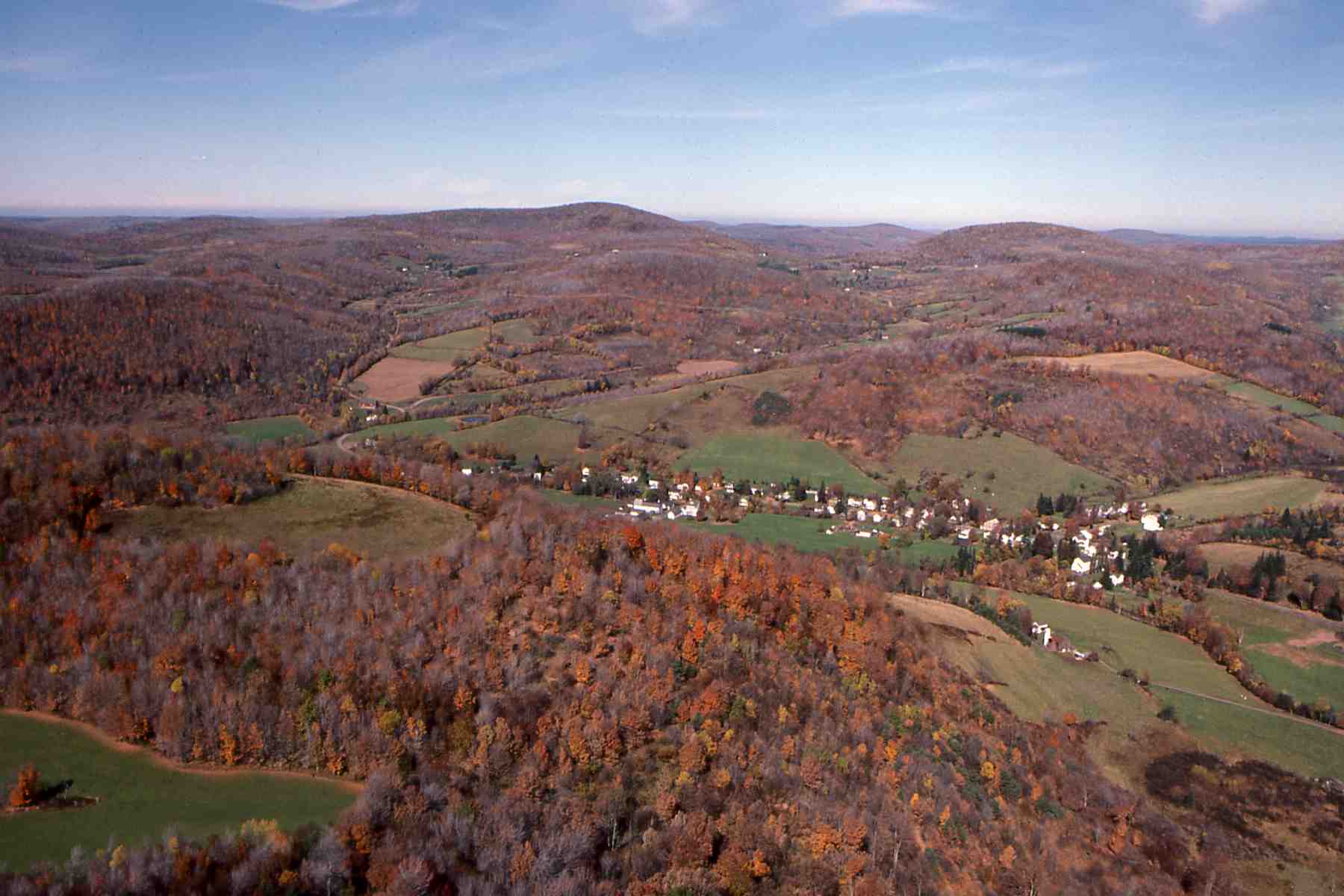
Town of Bovina, New York
 |
The Official Website for the Town of Bovina, New York |
| Town Historian | |
| C. Raymond LaFever 2319 County Highway 6 Bovina Center, NY 13740 Office: (607) 832-4302 E-mail: bovinahistorian@gmail.com Bovina (NY) History Blog |
| This very brief history of
the Town of Bovina is based on a 1970 history written (probably by Fletcher Davidson) to
commemorate the 150th birthday of the town and distributed by the Bovina Library Association.
It has been updated and added to, using information from an historical piece written by Jane Hilson in the
1950s. The text was written by Ray LaFever and reviewed by Town Supervisor Charles LaFever and by Jack and Barbara Hilson.
Brief History
of Bovina
written for the town's 175th Anniversary in 1995. The Bovina of 1995 was formed from parts of Delhi, Stamford, and Middletown by an act of the state legislature on February 25, 1820. The name, Bovina, comes from the Latin word bovinus, meaning cattle. It was suggested by Gen. Erastus Root because it was a pioneer town in the dairy industry. Pre 1820 History A vast area between the east and west branches of the Delaware River had been claimed by the Dutch, English, and French. By a treaty in 1701 England became the owner. In 1708 Queen Anne granted the land to a group of eight men in what was known as the Hardenburgh Patent. After many years the land was surveyed into 41 lots. The land now known as Bovina came into possession of the Livingston family, ancestors of the Gerry family. The Gerrys own a large estate around Lake Delaware in the southern part of the township. The area known as Bovina lay first in Albany County. Later, it was Ulster County, and finally, in 1797 became part of Delaware County. In 1790 four young men from Westchester County made a prospecting trip through the area. One of them, Elisha Maynard, whose father emigrated from Northern England, stayed to clear a piece of land and build a small cabin. He sowed a plot of winter rye and left for home. The next spring he returned with his family and possessions piled on a sled pulled by four oxen from the Hudson River. He was Bovina's first settler. In 1793, his son, Elisha, was born, the first birth of a white settler in Bovina. The Maynard's had eleven more children. The first marriage to take place in Bovina was James Russell and Nancy Richie in 1794. The first recorded death was Hezekiah Davis in 1798. Four years after Elisha Maynard settled in what is now Bovina, Alexander Brush came from Long Island and settled on the site of the present Bovina Center. He cleared brush from an area that is now the home of Tim McIntosh and purchased about 400 acres of land, including the present site of the hamlet of Bovina Center. Parts of this land he later sold to new settlers. In 1796, he erected the first grist mill in Bovina at the site of the current Town Garage. Brush also was the local preacher for the Methodist Society. In later life he became blind and crippled, but continued to preach - often from a rocking chair. For nearly a half century after his death Bovina was called "Brushland" in his honor. Mr. Brush's friend and nearest neighbor was James Bogardus. His home was on the site of the Parsons residence, next to the current United Presbyterian Church. He cleared and owned a large piece of land at the northern end of the village. For many years, Brush and Bogardus existed here in real pioneer fashion. Creation of the Town In February 1820, a committee composed of Lewis Mabie and Robert Hamilton accomplished of the task of creating the Town of Bovina. They submitted a handwritten account of expenses of setting up the town: To Walter Crozer for surveying $ 27.00 Chain and flag bearers 23 days 17.25 2 gallons rum for surveyors 2.25 To Charles Hathaway for map of Bovina 1.25 For going twice to Albany (11 days service of man and horse) 19.25 $ 67.00 On the first Tuesday in March 1820, the first town election was held at the home of John Hastings. Those elected included: Supervisor, Thomas Landon; Town Clerk, Charles Leet; Assessors, Peter Drummond, John Hastings and Robert Hamilton; collector, John Seacord. Also elected were three commissioners of highways, two overseers of the poor, four constables, seven fence viewers and damage appraisers, four pound-masters, three commissioners of common schools, three inspectors of schools, and thirty overseers of highways. Thirty-six farms and forty-two original families were in Bovina after it became a separate town. Most of the early settlers were of Scottish descent. It is likely that the hills and valleys reminded them of Scotland. The population in 1820 was 1267 hitting a high of 1436 in 1845, then gradually decreasing to 550 in the 1990 census. Historic Events Bovina's small size and relative remoteness would seem to preclude it from participation in any significant historical events. This assumption is not always true. For instance, it played its part in the Anti-Rent war of the 1840s. Anti-Renters gathered to protest the injustice of the land lease system in effect in New York State. Land in Delaware County, as in much of New York, was given by grant or purchase. Owners then induced settlers to lease parts of this land. This method allowed a few families in New York State to control the destiny of thousands of people. Settlers had a difficult task making rent payments and feeding their families. The John Secord Hotel was the site in the hamlet in 1844 of the areas first meeting of Anti Renters. As in other areas of the county and state, they formed an organization to resist evictions. They used tin dinner horns to signal an eviction and work warpaint and Calico for a disguise. The most infamous moment in the War took place in nearby Andes with the killing of Under-Sheriff Osman Steele during an eviction. Eighty-four persons were convicted for their role in this incident. Two men were sentenced to hang for the murder, one of them a Bovina resident named Edward O'Conor. The governor later commuted the sentences to life imprisonment. The new governor pardoned all the anti-renters. The result of the anti-rent agitation was that new laws were enacted, which cured some of the evils of the lease-hold system. The tenants were able to buy, at easy prices, the land they had tilled and occupied. Bovina currently is a 'dry' town, meaning that the sale of alcoholic beverages is not allowed. This has not always been the case. Bovina had several distilleries in the 19th century, including one built by Cornelius Davis in what was then Brushland and another at the Butt End built by William Doolitle. Bovina officially went dry in 1947 . An effort to relax the restrictions was attempted in the 1980s but the voters decided to stay 'dry.' In the 1970s, Bovina had a 'border dispute' with the Town of Andes. This all started when New York State mandated uniform tax maps be created. When these were completed around 1977, they revealed a different border between Bovina and Andes. There were three possible lines: 1) the tax map line; 2) the generally accepted line from the original survey; or 3) the line from the actual description. The original survey contained some errors. The issue was settled by a compromise between the towns and approved by the county and state. Industries Early settlers came here, mainly, to carry on agriculture. They turned their attention to sheep raising and later to dairy farming. Bovina farmers earned a reputation for breeding very fine strains of cattle. Their cows were shipped to various distant points. Once, Bovina butter was said to be the best in the United States, and even was served on the table in the Presidential mansion in Washington. Bovina had industries other than agriculture. Using natural water power, woolen mills, cider mills, grist mills, and sawmills sprang up here and there. The first grist mill was erected in 1796. Early mills sometimes were several miles from farms, requiring a long, backbreaking, and sometimes dangerous journey by foot to grind a farmer's grist into flour. The manufacturing of woolen cloth was first carried out by Thomas H. Johnson and his brother. This involved a carding mill for preparing the wool, a fulling mill for its weaving, and a woolen mill for making the garments. Several shops for blacksmiths, coopers, joiners, tinsmiths and carpenters provided work for people in those particular trades. There were three blacksmith shops in the hamlet, locating in Dorothy Russell's garage, one in the garden lot of Neil Shoemaker's home, and one in [Arthur Russell's] garage. Behind this garage was a large tannery. This processed the bark used in tanning hides. Bovina at one time had four cooperages in the hamlet. There were many other small businesses. In the house now owned by Amy Burns was located the town's first telegraph office. There have been stores on the sites of Russells store and the now closed Hilson Brothers for over 100 years. There were hotels on the site of Lillian Hilson's and Burt and Anne Tator's homes and on the site of Mary Jardine's house. The small house that once existed between Therese Aitkens' house and Amy Burn's home was once a tailor's establishment. The Bovina Center Cooperative Creamery was established in 1902, milk that time coming from 67 dairies and totaling 22,000 pounds. The creamery closed in the mid-1970s and is now the McIntosh Auction Barn. Today, there are fewer than ten working dairy farms in Bovina. Russell's General Store has been operated by the Russell family since January 1, 1919, when Cecil Russell bought the store. He operated it until his passing in 1982. His daughter Marjorie continues to operate Bovina's only general store. Until recently, Alex and Jack Hilson operated a general store and feed store. Post Offices and Postmasters Like other conveniences the postal service was quite limited. Mail for the community was brought in about once a month from Delhi or Stamford. Four post offices have served the communities, only one of which still remains. 1. Fish Lake was established at Lake Delaware (then know as Livingston Lake's) in January 1821. Thomas Landon, the town's supervisor, was the first postmaster and George Chase the last to serve, when it closed May 30, 1844. 2. Bovina post office served the Butt End area from April 1821 to April 1947. John Hastings was the first and Mina B. Wilson the last to faithfully distribute mails in the northern end of the town. 3. Bovina Valley covered the area around the "Hook" from February 1862 to May 1903. Andrew Strangeway was the first and William F. Mason the last postmaster. 4. Bovina Centre, with Hiram Davis as postmaster, opened in April 1836. In 1849 the name was changed to Brushland. The post office at that time was located at the current site of the Bovina Museum. In 1886 the name reverted to Bovina Centre. Finally in 1893 it became Bovina Center. Patricia Parsons was the last regular postmaster in Bovina Center. The Post Office closed in 1993 but was reopened as a Community Post Office under contract with the town in late 1993. Churches From the beginning love of county and love of God went hand in hand with these Scottish settlers. An early canvas of the Delaware County Bible Society showed a bible in every home. The canvas also revealed that more than 60% of the children enrolled in the public school were also in the Bible School. The first sermon preached in Bovina was preached in 1795 in the bar room of the Red House, a hotel kept by Thomas Landon at what is now Lake Delaware. Four churches were established at different times in Bovina. 1.United Presbyterian - In October 1809 Dr. Bullions organized the congregation under the name, "Associate Presbyterian Church of Little Delaware." Services were held in homes, schools, barns and taverns until 1815 when the first church building was raised on the south side of the graveyard at the end of Reinertsen's road. The building was 36 feet by 30 feet. Rev. Robert Laing was called as the first resident pastor with an annual salary of $250. The present church in Bovina Center was built in 1849, and 10 years later it was enlarged by adding galleries. Dr. James Lee was pastor from 1856 to 1879. He served as a chaplain during the Civil War. In later years two other Bovina pastors, Rev. Harvey McClellan and Rev. Stanley McMaster, left Bovina to serve as chaplains in the Armed Forces. McClellan served during the Second World War. 2. Methodist was served by Alexander Brush -- the local preacher. In 1812 Rev. William Jewett was called to minister to a thriving congregation. The church building was erected in 1849, where Gertrude Hall has a home now. The Methodists were not popular among some of the other settlers, some of whom thought Methodism was a fearful disease. With dwindling membership early in the 20th century, the group disbanded about 1915 at the close of Rev. Elmer Benn's pastorate. 3. Reformed Presbyterian was organized in 1814. Rev. James Douglas who came from Scotland became the first ordained pastor. The first church was a stone structure located in the Butt End area. In 1861, the church was relocated to the hamlet, located where the Fire Hall is now. Many loyal families supported the work of the church for more than a century, but membership began to decrease. It was closed in 1944 at the end of Rev. Norman Spear's pastorate. 4. St. James Episcopal - In 1910, parishioners began worshiping in a chapel owned by Mr. William Mason. The first rector was Father William Long, who lived next door to the chapel, in the house presently occupied by the John Masons. James Gabriel and James Fisk were the first to be baptized in the chapel in 1914. In 1922 the corner stone of the beautiful stone church was laid. It was designed by Mr. Ralph Cram, an English Architect. It was erected by Angelica, Mabel, Robert and Peter Gerry in memory of their parents, Mr. and Mrs. Elbridge T. Gerry. Schools The first school in Bovina was established in 1808. It was located where the United Presbyterian Church now stands and was later moved to the site of the Joe Dibble home, just across the road. When the town was formed there were six one-room schools, with a student population of about 400 children between ages five and fifteen. Total expense of these schools was $221.87. Later the number of schools grew to twelve, one located in each neighborhood. 1. Maynard, 2. Pink Street, 3. Butt End, 4. Bovina Center, 5. Miller Ave., 6. The Hook, 7. Coulter District, 8. Biggar Hollow, 9, Yankee Town, 10. Bramley, 11. Coulter Brook, 12. Dean District. With the formation of the central school districts, Bovina no longer has its own schools. Bovina's last school to close was No. 4 in 1961. Mrs. Mary Jardine was the last teacher. This school building was built in 1893. It is located in the hamlet and is now the Bovina Public Library. The Maynard School has been preserved as it was at the time of its closing. It is owned by the town but maintained by the Bovina Historical Society. Most children in the Town of Bovina now go to Delaware Academy and Central School in Delhi, though some go to either South Kortright or Andes Central Schools. Other Public Institutions In Bovina Center is a public library of several hundred volumes. The first library was in the basement of the United Presbyterian Church. In 1917, it was moved to the building now owned by the Historical Society. It is now located in the former District 4 Schoolhouse. It is supported by gifts of money, books, magazine subscriptions by individuals and organizations, as well as by state aid and town funds. For years, Strangway's Hall, over the present garage, was a site for dances and other entertainments. The Town owned Community Hall was built in 1930 with a combination of public donations and tax dollars. Land was donated by John, Jim and Jane Hilson. It still serves as the community hall and is used for a variety of public, recreational and social events. It now also houses the Community Post Office and the offices of the Assessor and Town Justice. The water system, promoted principally by J.W. Coulter, Andrew Doig, and Alexander Hilson, was built in 1913 and now supplies the town with pure water. The fire department was organized in 1915. The first officers of the company were Alex Myers, chief engineer; John R. Aitken, the foreman of the Hose Company; and David Currie, the foreman of the Hook and Ladder Company. Trade Centers There are today, as in the years gone by, three centers of population and business. 1. The Butt End where the northern part of the town formerly came to pick up the mail, to purchase staple groceries and exchange greetings with neighbors. Butt End was a name given to the northern portion because it was said to be the stronger section. So in a joke, that section was likened to the butt end of a tree. The name still is used to refer to northern Bovina. 2. The Hook named for the shape of the road served the southern end of the town in much the same manner. 3. Brushland, also know as The Huddle, and now Bovina Center was near the center of the town. People from the various neighborhoods frequently came to the post office, stores or mills and it was during these trips that they exchanged local news. Conclusion One hundred seventy-five years after its formation, Bovina is the smallest in area, and the most sparsely populated town in Delaware County. Nestled in the foothills of the Catskills, it attracts hundreds of summer guests from the New York metropolitan area. The town is easily accessible by Route 28. Within driving distance are golf course, ski centers, and excellent trout and bass fishing. In recent years, bed and breakfast establishments have sprung up in the area. Today, Bovina Center is much the same in many ways. The Scottish thrift and piety of the town's ancestors have transmitted traits in its citizens that make this a quiet and hospitable little town. |
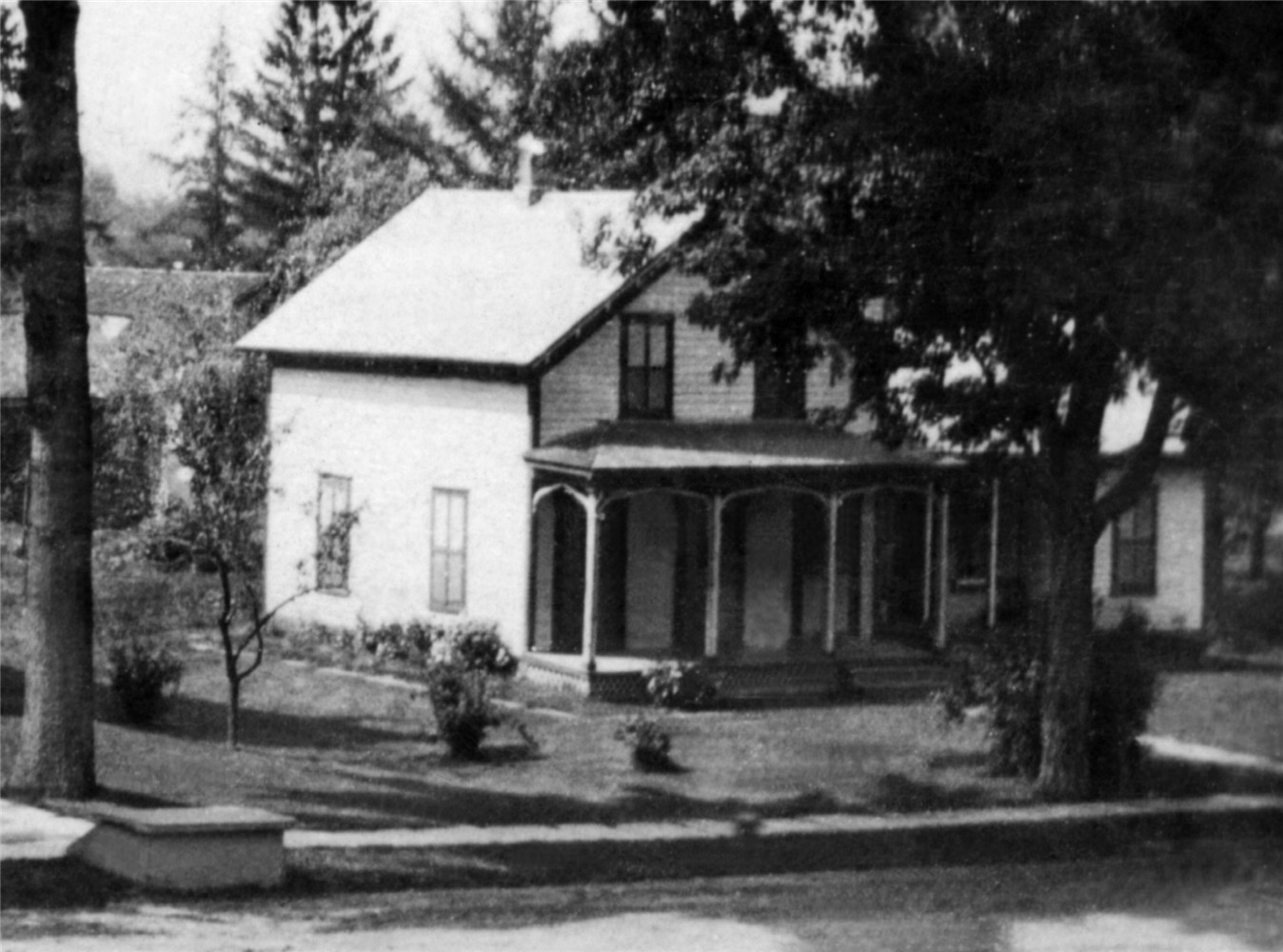 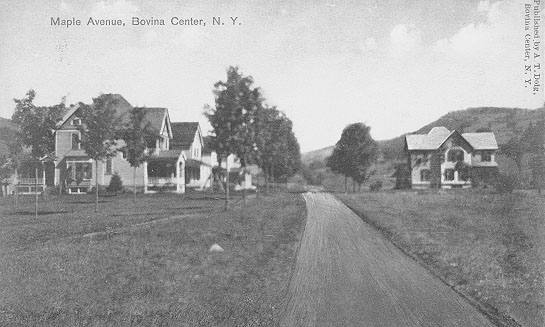 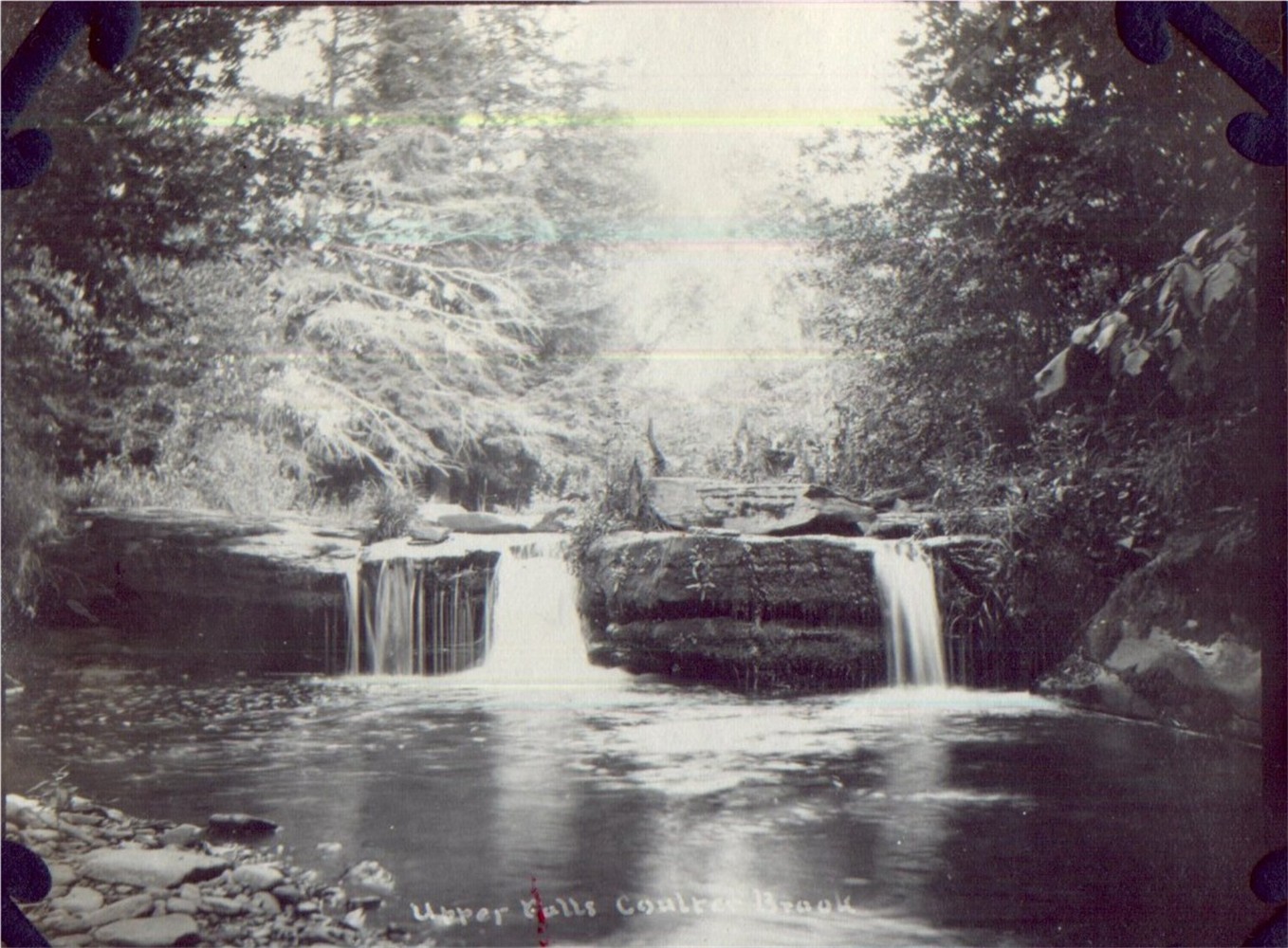   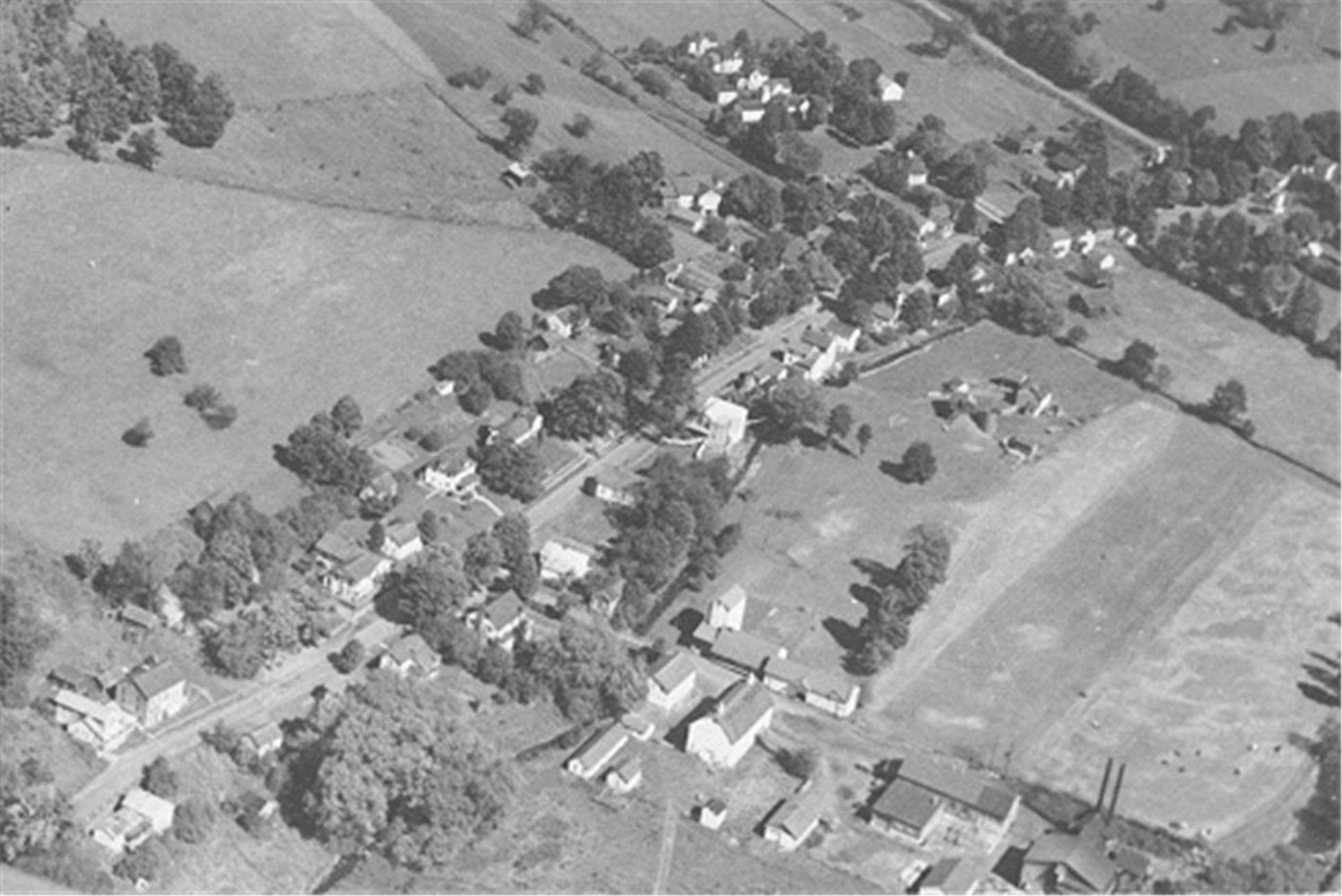 |